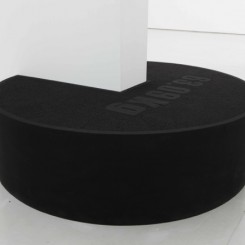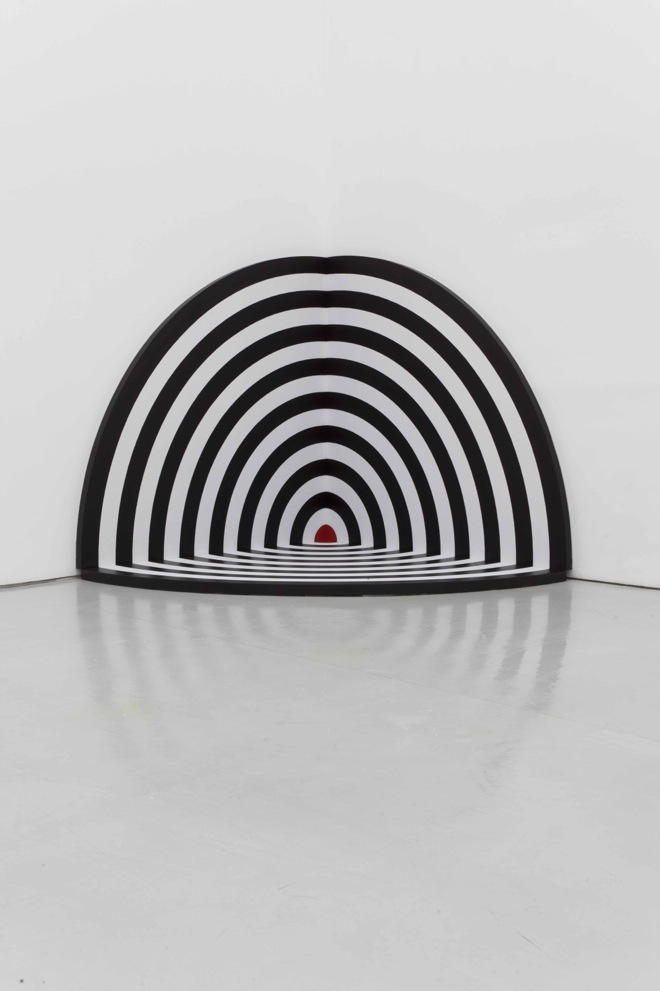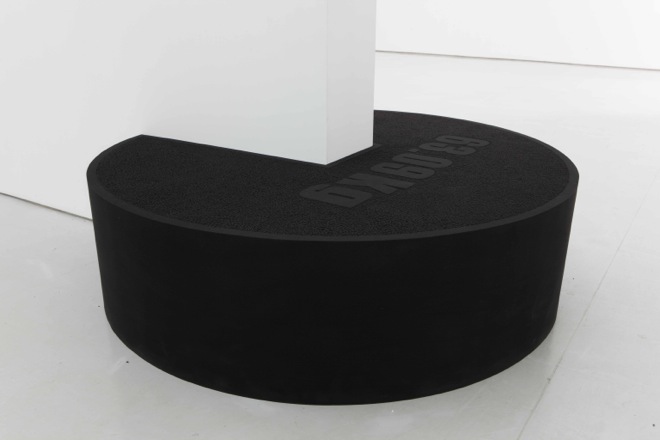“Carrier”: Gao Lei Solo Exhibition
White Space (No. 255, Caochangdi Airport Service Road, Chaoyang District, Beijing 100015), Sep 7 — Nov 17, 2013
With his third solo display, Gao Lei proves again to be an artist among few able to deliver an exhibition — not a bunch of works, but a show that owns the space; an entity and experience contained and fulfilled, not over-confident, undermined by one or two pieces or subject to other pitfalls.
It is ironic, then, that the works themselves hone in on sensations that are quite disruptive and destabilizing, an endemic inertia seems never far away. Yet one remains intrigued — isolated by and interested in the things also there in the room. Gao Lei’s first exhibition at White Space, “The Principle” (he is not shy of titles for his shows, though the works follow the anti-meaning letters-and-numbers trend) revolved around an effective play with containment and voyeurism, with a metal booth, white central kiosk and paintings in which grids created a sense of looking into — or was it looking out of? — some sort of schematic enclosure. Surveillance and systems of control were at issue.

Gao Lei, “C-45″, sponge cushion, linen, bulldozer track, 262 x 200 x 59 cm, 2013
高磊,《C-45》,海绵垫,麻布,推土机履带,262 x 200 x 59 cm,2013
“Carrier” seems to be about dimensions in a different way. For want of a better explanation, one feels that it plays at opposites, even conjuring them when they are not, technically, there. Beauty is not here, but neither are the works at all ugly. The original functions of some or of their components — filing-cabinet drawers, for example, gymnastics bars, a ski or axe head — are inhibited or changed, but does this lack of function mean uselessness? There is black against white in the target-like work “E-92,” the original round of which has been pulled back into the angles of a corner. There is the impression of physical weight — a round black bulk declaring itself to be “63.09 kg” envelops the partition wall — yet also an atmosphere of lightness linked perhaps to a lack of definite context. One senses limpness, but also solidity. Perhaps the most memorable thing here is a large gunmetal-grey crash pad which has tank or bulldozer tracks wrapped round its two sides (“C-45”) in a close marriage of threat and comfort.
Thus does Gao Lei’s skilful transformation of materials beg the transformation of understanding, or the means by which that could happen. The cool, cast plasticity of the works — in general, and save for occasional localized shots of color, the artist sticks to a grey, black and cream palette — makes them seem sometimes like the enlarged pieces of a board game. The sensation of being inside a game is heightened by an Escher-esque quality in the filing-cabinet drawers, for instance (“A-7/12”), which have become a ladder leaning against the wall with just one drawer that is not hanging perpendicular. There is a stray billiard ball from the work “J-96” lurking in the top corner of the room which many people missed. There is the awareness of something one might physically do in the company of these works, or touch — pull up to the gymnastic bars or pick up the phone in the quilted booth. But Gao Lei’s work remains in the realm of art one doesn’t touch; for now, this is all in one’s head.



